Firefox OS Hands-On: Open Platform Breaks Barrier Between Web and Apps
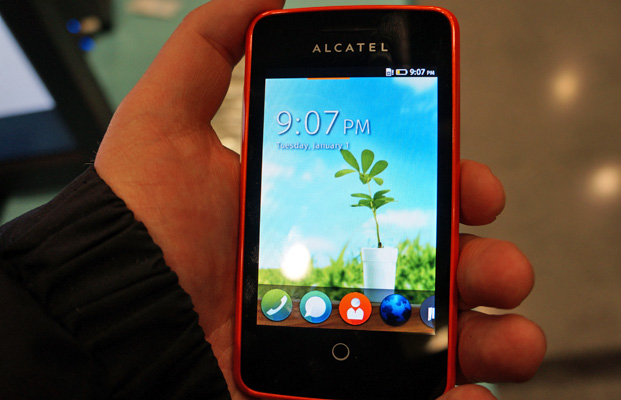
Mozilla's new Firefox OS for mobile phones is all about breaking down barriers, from the walled garden of app stores to the partition between apps and web sites. Here at Mobile World Congress, the organization showed why its open platform could break through against the likes of Google and Apple while two of its carrier partners, ZTE and Alcatel, unveiled the world's first Firefox phones. After briefly using Firefox OS on both the ZTE Open and the Alcatel One Touch Fire, we're convinced that this operating system has legs.
At Mozilla's launch event, a company rep demonstrated Firefox OS for us on the new ZTE Open. ZTE hasn't officially announced this phone yet, but like the other initial Firefox phone, it's targeted at price-sensitive emerging markets. With a 3.5-inch HVGA screen, 256MB of RAM and a 800-MHz Qualcomm 7225A CPU, we'd expect modest performance, but everything we saw in our demo worked extremely well.
The rep first showed us the home screen, which has a standard wallpaper and clock, but no widgets. Below the home screen sit shortcut icons for the most important functions, including the phone dialer, SMS messenger, contacts and web browser. Swipe to the right and you get shortcuts for every app you have installed. The top of the screen houses a black status bar which looks just like Android's, complete with a clock, battery indicator and signal status. The status bar pulls down to reveal notifications and some quick settings.
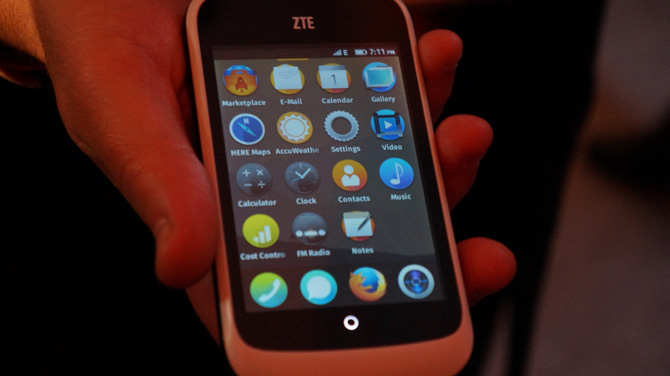
Below the screen, there is a home button but no other permanent navigation. To switch between open apps, users can hold down the home button and the user will be able to swipe between cards representing each program.
He showed us the very-attractive contact application, which grabs information about each of your contacts from Facebook then took us into the map application and demonstrated its ability to let you save maps for offline use. He took us to the marketplace app to see the listings there, but explained that developers don't need to sell their software through Mozilla's store. As on the PC or Mac, software publishers can sell their apps directly from their own sites or through other marketplaces. "They don't have to go through Mozilla so it's not a gatekeeper," he said.
The rep then demonstrated the operating system's most unique feature, dynamic app search. Using the search bar, users can type in a term of interest and they will get a bunch of icons leading them to related content that's a combination of Firefox OS apps and related websites. To show how this works, the rep searched for the band "U2," and immediately his screen changed to show a list of related shortcut icons on top of U2-themed wallpaper. Though all the icons looked the same, many were websites that were never programmed for Firefox, but were related to the topic. These included ticketing apps, music apps, YouTube and a shortcut that simply linked to Rollingstone.com.
The beauty of dynamic app search is that it makes no distinction between sites and apps and web developers don't even need to be aware of Firefox OS for their sites to be included in the results. According to Mozilla, the search just grabs the fave icons from HTML 5-optimized sites and uses those to represent those domains. So that Rolling Stone icon might make it look like the magazine has a dedicated Firefox OS app, but once you click it, you'll go directly to the company's mobile site.
Stay in the know with Laptop Mag
Get our in-depth reviews, helpful tips, great deals, and the biggest news stories delivered to your inbox.
Our rep told us that some popular search result sets are manually programmed in by Mozilla volunteers but others are the result of search algorithms which figure out which image to grab for wallpaper and which icons to show. During Mozilla's press conference, an exec searched for "Oscars" and got a list of movie-related icons on top of Oscar-themed wallpaper. If users want to keep any of the apps permanently, he explained, they can always choose to install them.
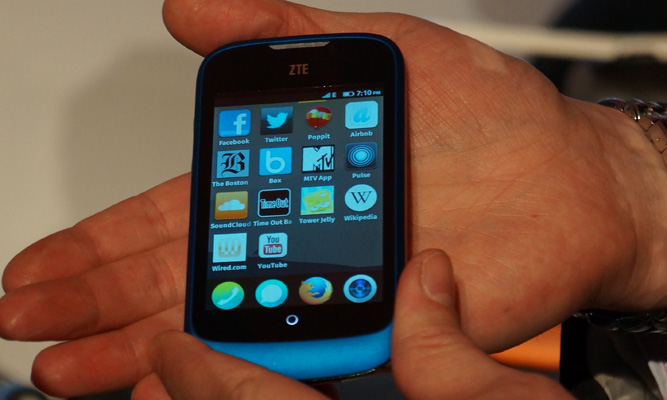
The ZTE Open is too low end to launch in big markets like the U.S., but we hope the company will use the same design language on handsets it releases in first world markets. We particularly liked the rounded, smooth shape of the phone and the vibrant blue, orange and white versions of it we saw.
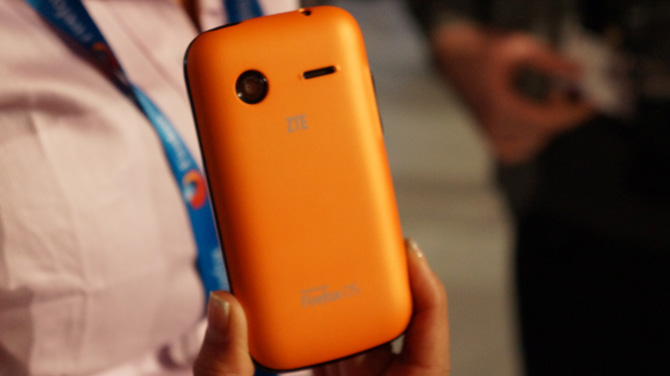
Alcatel One Touch Fire
Later, we were able to go hands-on with Alcatel's One Touch Fire, the other Firefox OS phone that debuted today. With similarly meek specs that include a 1-GHz CPU and 256MB of RAM, the Fire would never be mistaken for a super phone, but it also comes in attractive colors; we particularly liked the popsicle orange model and think someone out there may like white with pink accents.
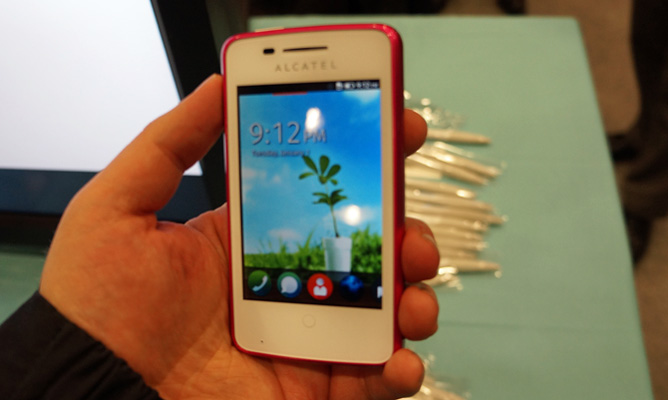
The device also handled Firefox OS well enough, but unfortunately, the demo unit did not have an Internet connection handy so we couldn't perform searches, surf the web or launch the market. However, we were able to launch an HTML version of Cut the Rope which played flawlessly.
Because of Firefox OS's ability to run on low-end hardware, OEMs think it's perfect for emerging markets. However, from what we've seen, it's the platform's ability to provide a truly open ecosystem and blur the line between web and app content that could ultimately make it a success around the world.

